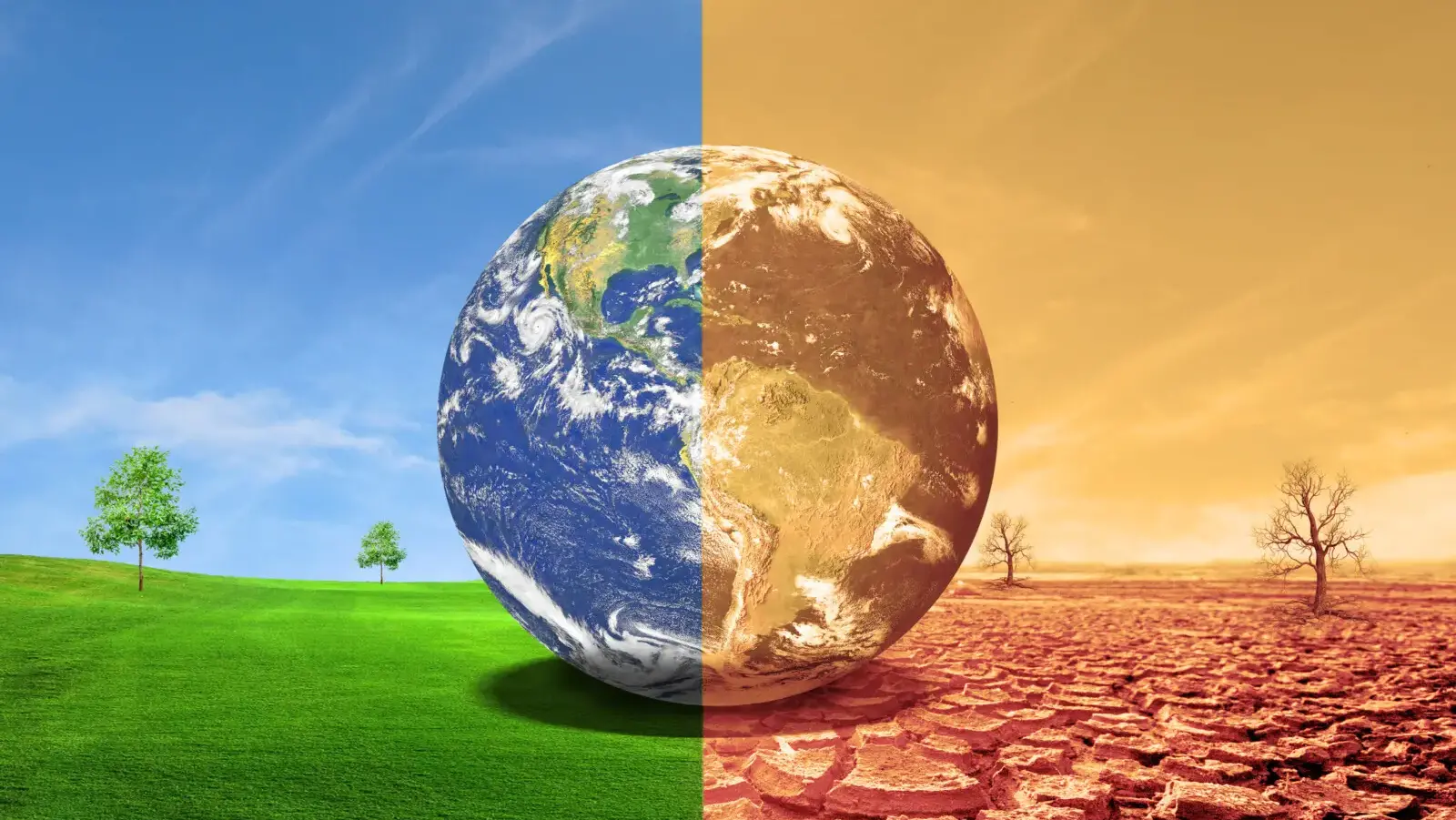Exploring Both Sides of the Debate
The debate over global warming includes differing viewpoints on its causes and impacts. This article presents a perspective that questions the extent to which human activities are responsible for recent climate changes. By examining natural climate variability, the accuracy of climate models, greenhouse gas contributions, and economic considerations, this article aims to provide a balanced view on the complexities of global warming.
Impact on Mental Health and Climate Alarmism

While the debate over global warming and its causes continues, it is crucial to address the significant impact of climate alarmism on mental health. The constant influx of alarming news about climate change, often framed in apocalyptic terms, can lead to heightened anxiety, stress, and feelings of helplessness. This phenomenon, sometimes referred to as “eco-anxiety,” particularly affects young people and children who are inundated with messages about the dire state of the planet.
Studies have shown that this relentless focus on environmental catastrophes can contribute to mental health issues, including depression and anxiety disorders.
Due to being exposed to only one side of the discussion, the detrimental impact that media and schools are having on children is alarming. Furthermore, encouraging balanced education and critical thinking can mitigate the negative effects, ensuring that children receive a more comprehensive understanding of the issues at hand.
Key Points Against Manmade Global Warming

Natural Climate Variability
Historical Climate Changes:
Earth’s climate has experienced significant fluctuations throughout its history. For example, the Medieval Warm Period (approx. 900–1300 AD) and the Little Ice Age (approx. 1300–1850 AD) illustrate that climate changes can occur independently of human activity. These historical periods show that the planet has natural cycles of warming and cooling. Earth’s climate changes are often driven by various natural factors, including volcanic activity. These can release large amounts of aerosols and particulates into the atmosphere, reflecting sunlight and causing temporary cooling.
Solar Activity:
Variations in solar radiation, such as those related to sunspot cycles, significantly impact Earth’s climate. Increased solar activity in recent decades may contribute to observed warming trends, suggesting that changes in the sun’s energy output play a crucial role in climate dynamics.
Ocean Currents and Oscillations:
Oceanic phenomena like the El Niño-Southern Oscillation (ENSO) and the Atlantic Multidecadal Oscillation (AMO) significantly influence global climate patterns. These natural oscillations can account for observed temperature fluctuations and climate anomalies, highlighting the role of natural variability in climate change.
Questioning the Accuracy of Climate Models
Model Uncertainty:
Climate models, while advanced, rely on numerous assumptions and simplifications. The inherent uncertainties and limitations in these models can undermine their reliability in predicting future climate changes. Discrepancies between past projections and actual temperature trends call into question the accuracy of these models.
Temperature Projections:
Historical temperature projections have sometimes overestimated the rate of warming. For instance, some models predicted more rapid temperature increases than what has been observed. These overestimations suggest that current models might also be prone to inaccuracies, affecting the credibility of alarming future predictions.
Greenhouse Gas Attribution
CO₂ Concentration and Temperature Correlation:
While there is a correlation between CO₂ levels and global temperatures, causation is debated. Ice core data indicates that past temperature increases have preceded rises in CO₂ levels, suggesting that temperature changes can drive changes in CO₂ concentrations, rather than the other way around.
Minor Greenhouse Gas Contribution:
CO₂ constitutes a relatively small fraction of all greenhouse gases, and its role in driving climate change may be overstated. Water vapour, which is more abundant, plays a more significant role in the greenhouse effect. This suggests that other factors besides CO₂ emissions should be considered in the climate change equation.
Economic and Policy Considerations
Cost of Mitigation:
Implementing policies to drastically reduce carbon emissions, such as transitioning to renewable energy sources, involves significant economic costs. These resources could be better spent addressing immediate societal needs or adapting to inevitable climate changes. The economic burden of aggressive climate policies on developing countries will also be substantial.
Technological Optimism:
Future technological advancements may provide solutions to climate challenges without the need for drastic emission cuts. Innovations in geoengineering, and other fields could mitigate the impacts of climate change more effectively than current strategies. Investing in technology development could offer a more balanced approach to addressing climate issues?
Then again, without fully understanding the situation, and, knowing IF CO₂ really is the issue, aren’t we embarking on a quest that will heavily punish the developing nations, and also causing more poverty and food shortages within the developed nations?
Counterarguments to Common Claims

Sea Level Rise and Extreme Weather Events
Sea Level Variability:
Sea levels have been rising for thousands of years due to natural processes. Regional variability in sea level changes indicates that current trends may not solely be due to human influence. Historical data shows periods of both rising and falling sea levels, suggesting a complex interplay of factors beyond just human activity.
Extreme Weather Attribution:
The link between global warming and the frequency or intensity of extreme weather events is complex and not definitively established. Natural variability plays a significant role, and attributing specific events to global warming can be speculative. For example, historical records show instances of extreme weather long before industrialisation.
Biodiversity and Ecosystem Impacts

Adaptive Capacity of Species:
Many species have historically adapted to changing climates through migration, adaptation, or other mechanisms. Concerns about widespread biodiversity loss due to climate change may underestimate the resilience and adaptability of natural systems. Examples from past climate changes show that ecosystems can adjust to new conditions.
Focus on Local Conservation:
Rather than global climate policies, localised conservation efforts that address immediate environmental issues such as habitat destruction, pollution, and resource overexploitation may be more effective. Focusing on these tangible problems could yield more immediate and measurable benefits for biodiversity and ecosystems.
Current CO₂ Levels and Their Impact on Plant Growth

Current CO₂ Levels
As of 2024, the concentration of carbon dioxide (CO₂) in the Earth’s atmosphere is around 420 parts per million (ppm).
The Role of CO₂ in Plant Growth
Carbon dioxide is a critical component of photosynthesis, the process by which plants convert light energy into chemical energy, using CO₂ and water to produce glucose and oxygen. Higher atmospheric CO₂ levels can enhance photosynthesis, potentially leading to more robust plant growth. This phenomenon, known as the CO₂ fertilisation effect, has several implications:
Increased Photosynthesis:
Elevated CO₂ levels can increase the rate of photosynthesis, enabling plants to produce more biomass. Studies have shown that higher CO₂ can enhance crop yields and plant growth, particularly for C3 plants (e.g., rice, wheat, soybeans), which respond more significantly to CO₂ fertilisation.
Improved Water Use Efficiency:
Higher CO₂ levels can improve water use efficiency in plants. This occurs because plants partially close their stomata (the pores on leaves) under elevated CO₂ conditions, reducing water loss through transpiration while maintaining CO₂ intake for photosynthesis.
Potential Risks of Lowering CO₂ Levels
Efforts to reduce atmospheric CO₂ concentrations, could pose challenges for plant and vegetation growth:
Reduced Photosynthesis and Crop Yields:
Lowering CO₂ levels could reduce the CO₂ fertilisation effect, potentially impacting photosynthesis rates and, consequently, crop yields. This is particularly significant for regions that rely heavily on agriculture and where food security is a concern.
Adaptation Challenges:
Plants have adapted to higher CO₂ levels over the past century. A sudden reduction in CO₂ could stress plant systems that have acclimatised to these conditions. This adaptation challenge may affect not only crops but also natural ecosystems and forests.
The current elevated CO₂ levels have complex implications for plant growth and agriculture. Higher CO₂ will enhance plant growth and improve water use efficiency.
The debate on manmade global warming includes significant points questioning the extent of human impact on recent climate changes. Natural climate variability, uncertainties in climate models, the role of greenhouse gases, and economic considerations provide a nuanced perspective on this issue. Understanding these factors is crucial for a comprehensive discussion on climate change and the most effective ways to address it.
Suppression of Scientific Discussion

The debate on the impacts of CO₂ levels on plant growth and agriculture is often stifled by governments and specific organisations. These entities are accused of suppressing scientific discussions that present alternative perspectives on CO₂’s role in the environment. This suppression includes not acknowledging the views of respected scientists, including Nobel Laureates, who argue that elevated CO₂ levels have beneficial effects on plant growth and food security. The exclusion of these voices from mainstream discourse prevents a comprehensive examination of the issue, hindering balanced decision-making and policy development.
When scientific discourse is suppressed and opposing views are silenced, can it truly be considered science?
If respected researchers who present data suggesting beneficial aspects of higher CO₂ levels are not allowed to publish their findings or participate in discussions, the scientific process becomes biased and incomplete. This stifling of debate undermines the fundamental principles of scientific inquiry, which rely on open and rigorous examination of all evidence.
Opposing Views
There are actually thousands of scientists presenting an opposing view to the current narrative, and a few, including Nobel Laureates, can be found here – https://co2coalition.org/about/
Note: This article does not set out to prove or disprove that climate change is manmade, it is just about showing people both sides of the discussion.